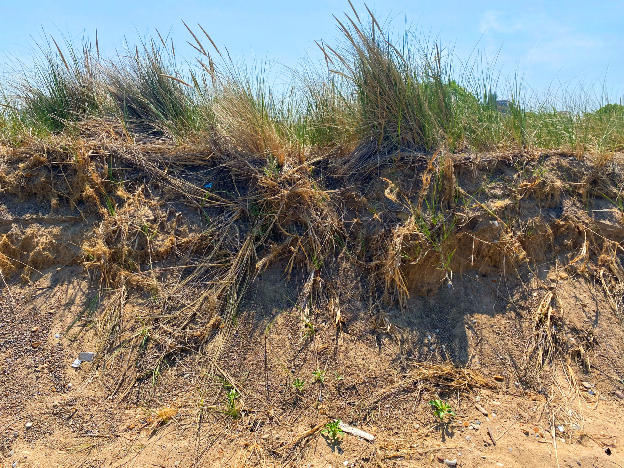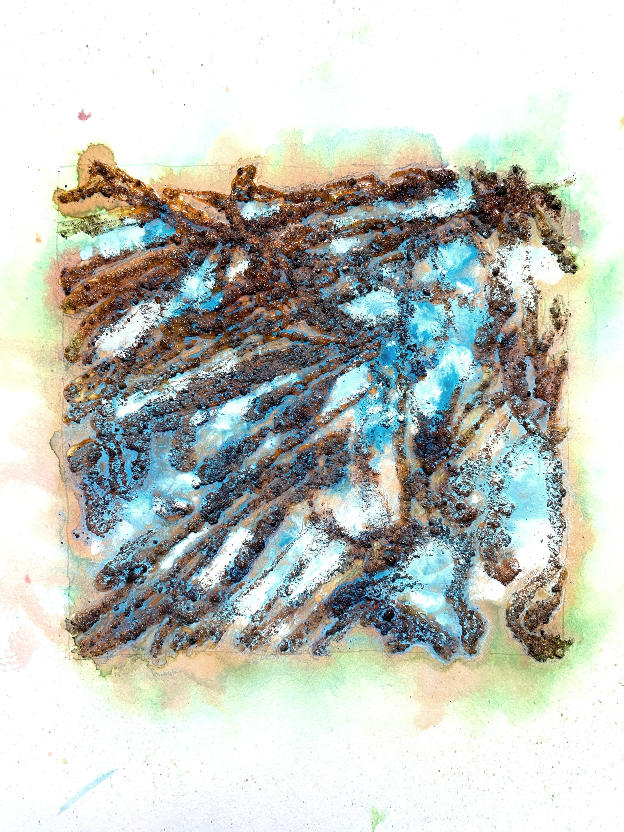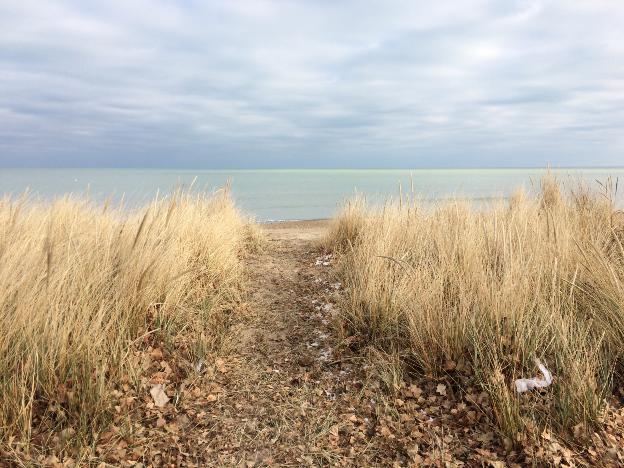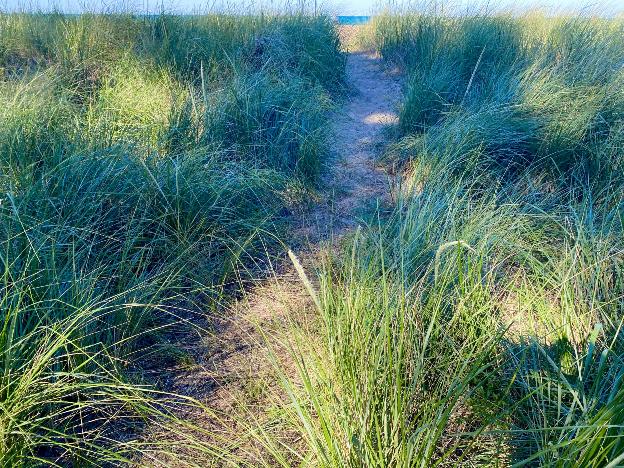Marram Grasses

Eco Development
The Loyola Dunes Restoration Project is rebuilding the native dune habitat of Lake Michigan's shoreline on Chicago's north side. This area had been negatively impacted by climate change over the past two decades and considerable erosion had occured along the lakefront. After the extreme intensity of Hurricane Sandy's winds in 2012, the lake waters had flooded the beach, bike path, playgrounds, lawn areas, and basketball courts. Following this extreme weather event, Marram Grass seedlings were planted a few feet apart in designated areas as a test to see if a more stable shoreline could be formed. Since that time, more and more areas of this wide stretch of public beach have been planted with these grasses and other native plants to reform and stabilize the topography of the lakefront.

The dune grasses have taken root over large areas of the beach and it has been fascinating to watch the evolution of this changing ecosystem. Over time, the small, sparsely spaced seedlings are now densely formed swaths of elegant grasses that, at their roots, catch the blowing sands and build taller and taller mounds. The deep, complex root systems can be seen during this process as the land formations grow and change through time.
Eco Research
Daily walks to the lakefront, just a few blocks from my home/studio, provides countless opportunities for watching the transformation of the lakefront and bringing this experience into my studio practice. Sketchbook work while at the beach allows for immediate interaction with the forms, textures, and colors embodied in the environment. Fallen dune grasses are painted with watercolor or ink and printed directly on the page. Sand is mixed with pigments and nature remnants are collaged directly onto painted surfaces.
Collagraph printing has also brought the dynamic nature of regeneration into my studio work. Foam core boards are coated with gel medium, a liquid adhesive, and placed gel side down to collect nature fragments directly from the beach. Dried grasses, sand, small beach stones, feathers, and assorted urban leftovers are left to dry on the plate in the configuration they are found in. These plates are then printed with black ink on different types of paper and layered with color pencil, watercolor, and other art materials.
Eco Art
The process of printing directly with natural forms became the motivation for my most recent drawings on assembled papers of different colors. These sustainable Nepalese papers are made from the inner bark of the Lotka bush and are fibrous and highly absorbent. Inked plants and grasses are pressed directly onto the papers and provide an organic, compositional framework for these large-scale pieces.

Layers of color pencil and other materials are added to further explore the physical and visceral energies of this important example of ecological rewilding, and to express my appreciation of and fascination with this beautiful, thriving lakescape.

This is my place by the lake
pulled by a strong undertow
and a luminous moon aglow.
This is my heart in your hand
swelled by the soundings below
and a bouyant lifeboat to row.
















Comments (0)